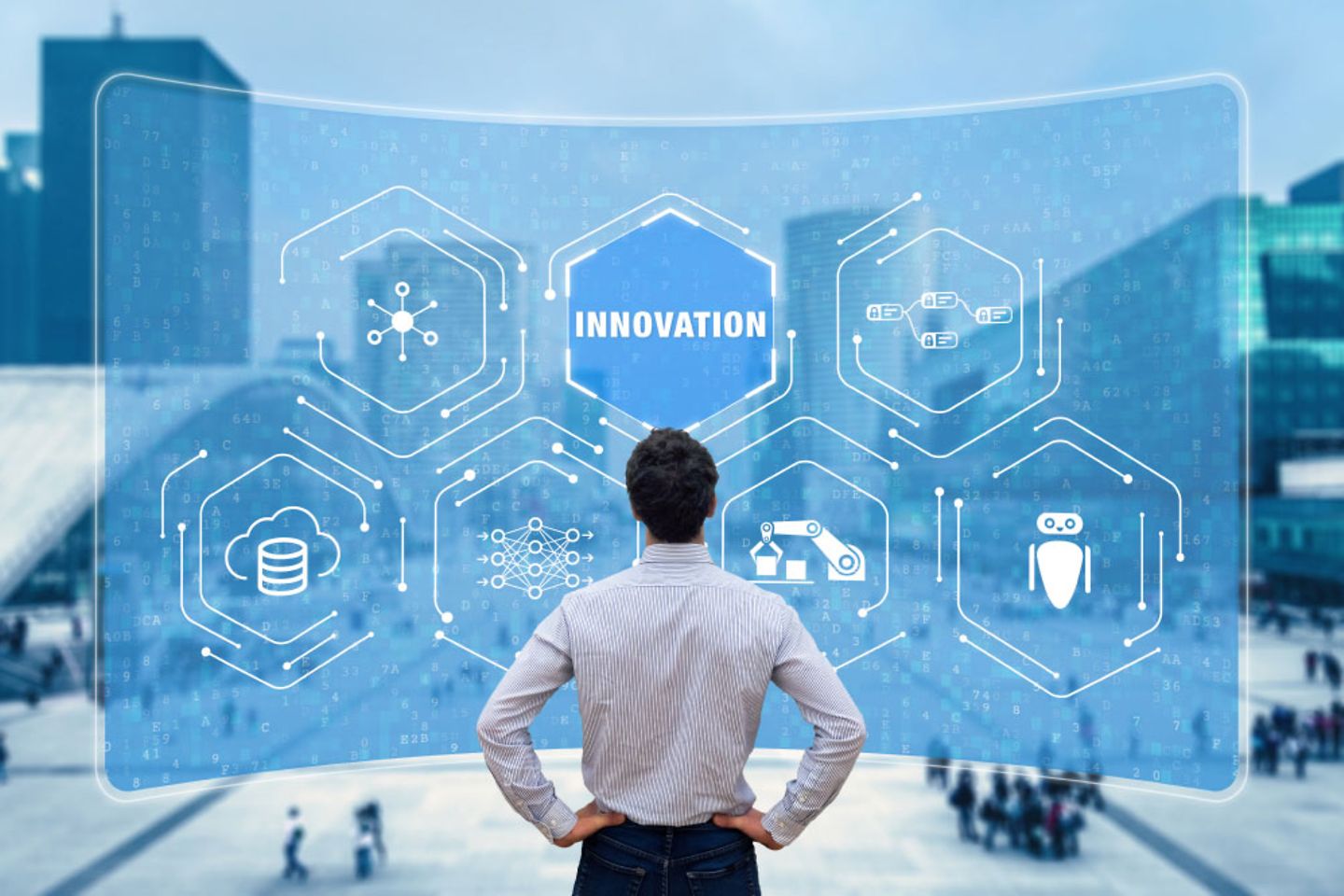
Increasingly organizations are investing in the Internet of Things (IoT) to help them achieve their digital innovation goals. Intelligent machines and storage systems that exchange data independently generate added value and flexibility. What technologies have companies implemented, and what ones are they still evaluating?

Better use of data, a reduction in security risks and error or failure rates, more transparent and resilient supply chains, and improved quality of products and services are among the most frequently mentioned central goals in our survey when it comes to digital innovation strategies. Improved customer experience, security, efficiency, and automation are considered as major benefits of digital innovation initiatives. Easier integration of business partners and reaching ecological sustainability targets are also considered as important goals by a majority of respondents.
All these aspects can be addressed with Internet of Things (IoT) approaches. That is why almost half of the decision-makers surveyed said they had IoT technologies in production.
Internet of Things approaches span a great variety of devices and IT and OT (operational technology, e.g., in industrial equipment) architectures, ranging from cloud-based IoT platforms to edge architectures, to IoT applications and embedded systems. They all have to be connected, and the data needs to be collected, analyzed, processed, and visualized. This complexity has to be managed and fully secured.
The general importance of data management to digital innovation was discussed above, and so was the role of cloud computing. In many areas of digital innovation, both aspects go hand in hand; this is particularly pronounced in the IoT space, as most IoT platforms are cloud-based. Cloud IoT data management is therefore widely established in many areas.

Cloud-based IoT platforms are used for centralized IoT data capturing, collection, storage, harmonization, and distribution for processing. Distributed models such as edge computing, and thus also edge IoT data management, are extending cloud infrastructure to factories, warehouses, stores, and vehicles, offering advantages in terms of latency and availability. Scalability is the big advantage of cloud computing, but due to the rising number of IoT devices and gateways, latency, connectivity, security, and connection costs may require edge solutions.
IoT applications utilize the processed sensor and machine data for specific processes and use cases such as fleet management, track & trace, SCADA/MES, SCM, and tools for simulation and event processing.
IoT device management comprises device provisioning, remote software updates, also over the air, and remote device control capabilities.
The massive increase in the number and types of devices, interfaces, and hybrid IT architectures makes IoT security essential for all IoT-related elements, such as devices, data, applications, and networks.
IoT-enabled embedded systems and gateways, i.e., computer systems as integral part of larger mechanical or electronic systems, are the most frequently discussed and evaluated investment in the IoT space; this is not surprising, given the omnipresent enrichment of “things” with intelligence.
IoT has been widely established in many companies; however, there is still room to extend the breadth and depth of use cases. That means AI, analytics, and visualization for IoT, i.e., data preparation, analytics-related data processing (incl. algorithms in the context of machine learning), and visualization of insights via tools such as dashboards, are not as advanced as in financial reporting, for instance. However, this is one of the most frequently discussed IoT investments in our survey.
Digital innovation is putting pressure on organizations when it comes to connectivity. IoT connectivity can be realized via mobile networks (SIM cards), Low-power WAN (LPWAN) technology that interconnects low-bandwidth, battery-powered devices with low bit rates over long ranges, or Wi-Fi networks. However, with its extended frequency spectrum, 5G can be considered as a backbone for a variety of use cases, as it provides consistent, fast, and scalable data connectivity services. It is expected to have a significant impact on direct and indirect customer service functions, as well as on supply chain, logistics, and distribution operating processes.
IoT is often an integral part of digital transformation strategies, as it can serve as a basis for comprehensive business transformation towards data-based business and service models. It will also help to achieve omnipresent sustainability targets in areas such as smart buildings, smart mobility, smart cities, and Industrial Internet of Things (IIoT).
However, IoT might not deliver the expected results if there is no coherent and clear, business-oriented strategy. IoT adoption has to be aligned with a broader digital strategy if companies want to avoid bottlenecks in data usage and maximize the benefits gained from data analytics.